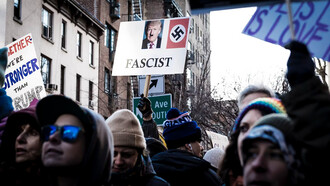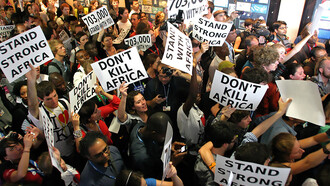If you stopped a hundred people on the street anywhere in Europe and asked them about the biggest political challenges today, chances are many would say the same word: migration.
But how did migration become so tightly linked with crisis? When did it shift from being a social or humanitarian issue to becoming a symbol of political failure—or worse, a tool for political gain? In fact, if we follow that thread further, we find that migration has evolved into something even more strategic: a central instrument in international relations.
Last month, I had the chance to work alongside a French journalist who creates documentaries about refugees. He has spent years closely observing the dynamics of the English Channel—a place where small boats cross the border between France and the UK almost daily.
In our conversations, he described how border enforcement there is not as stable or consistent as one might expect. Sometimes the patrols are tight; other times noticeably relaxed. What determines the difference? It’s often not about weather or resources—but politics. Depending on the state of diplomatic relations between the UK and France, the intensity of border control fluctuates. In moments of political tension or cooperation, the human reality on the water is directly affected.
It made me think. All my life, I believed we lived in peace. The European Union, after decades of treaties and trust-building, had seemingly transformed a continent once torn by war into a zone of unity, collaboration, and cooperation. The wars were over. The borders were open. We were one.
Of course, there was always a quiet voice in the back of my mind—a gut feeling that asked, How could it be that, after centuries of war, colonial conquest, and national rivalry, Europe had suddenly become a continent with nothing left to fight for?
Yes, the scars of the Second World War taught us that conflict should be avoided at any cost. And yes, trade has replaced tanks as the primary tool of diplomacy. But is it too naïve to believe that the desire for power simply disappeared?
That’s when I realized something deeper. Migration isn’t just a domestic talking point or a way to sway voters during elections. It has become a subtle—and powerful—instrument of international relations. Just like the journalist described, when UK–France relations are strong, border control on the French side becomes more intense. When relations are strained, enforcement loosens. Migrants caught in boats become symbols—and sometimes pawns—in diplomatic games between states.
But when we look more critically at how migration and power interact in today’s global politics—especially through recent academic work—it becomes clear that the dominant neo-realist approach to migration diplomacy has some serious blind spots. First, it doesn’t dive into or clarify what it means by “power,” even though power is one of the core concepts in international relations. Second, this way of thinking is mostly focused on states and individual actors—it looks at specific deals or negotiations but tends to overlook the broader systems, institutions, and rules that actually shape how migration works.
For example, how do we explain the influence of international bodies like the International Organization for Migration (IOM), which plays a key role in managing migration between countries like Australia and Indonesia, far from the usual centers of power? Or what about legal frameworks like the European Convention on Human Rights, which can actively block migration deals—like the UK’s 2022 agreement with Rwanda to send asylum seekers there? These examples show that power in migration politics isn’t just about governments making deals—it also runs through institutions, legal systems, and global governance structures.
Migration power as a three-part force: coercive, symbolic, and institutional
Migration, as I’ve come to understand it, operates through different forms of power—not just political decisions, but deeper forces shaping how states behave. I’d divide this power into three categories: coercive, symbolic, and institutional.
Coercive power
The UK and France have negotiated deals like the "one in, one out" model—for every migrant returned to France, the UK would accept an asylum seeker for family reunification. This kind of exchange isn't just about logistics—it's a performance of diplomacy, where both countries try to maintain control over their territory without appearing to violate human rights.
It's ironic. These deals often emerge from a desire to appear humane while actively avoiding responsibility. Migration becomes a bargaining chip. Coercive power here is subtle: not just patrols or surveillance, but political pressure, delegated enforcement, and controlled inaction.
Symbolic power
Let’s return to the beginning of this article. If you stopped a hundred people on the street today, the word migration would likely come up as a top political threat. That’s not just a coincidence—it’s narrative work.
In Bulgaria, we often say that the media is the fourth power in democracy. And in the case of migration, media outlets across Europe have played a huge role in transforming human mobility into a symbol of fear, invasion, or loss.
We’ve seen this clearly in Hungary, where government rhetoric and media campaigns have merged to depict migration as an existential danger. This is symbolic power: shaping the emotional and political meaning of migration. Before anyone crosses a border, a story is already being written about them.
Institutional power
Institutional power is less visible but just as decisive. It operates through international organizations, legal frameworks, and cross-border systems that structure how migration is governed — and often limit how much power individual states really have.
Take the International Organization for Migration (IOM), which acts as a key broker between states—coordinating returns, resettlement, and even funding enforcement efforts in third countries. Or consider the European Convention on Human Rights, which has directly blocked state attempts to externalize migration control, as seen in the UK’s failed effort to send asylum seekers to Rwanda.
These institutions don’t just implement policies—they shape what is politically possible. They impose rules, create accountability mechanisms, and sometimes challenge state sovereignty. Migration governance today is not only made in Paris or London, but also in Geneva, Brussels, and Strasbourg.
While migration is often treated as a domestic challenge, its management increasingly takes place through foreign policy and international deals. Behind closed doors, countries negotiate who should take responsibility, how borders are monitored, and where people on the move should go. Migration, in this sense, becomes a tool of global diplomacy—a way to assert influence, shift burdens, or extract concessions.
One of the clearest examples of this is the EU’s externalization strategy. Instead of focusing solely on managing migration within its own borders, the European Union has invested heavily in outsourcing border control to countries like Turkey, Tunisia, Libya, and Morocco. These states are paid, pressured, or politically rewarded to stop migrants long before they ever reach European soil.
But these deals don’t come without consequences. They often involve trading political silence for border security. For instance, the EU's 2016 deal with Turkey included financial aid and visa talks in exchange for Ankara keeping refugees from crossing into Europe. In practice, this gives third countries leverage: they can threaten to "open the gates" as political retaliation—turning human lives into diplomatic currency.
Even more recently, in 2023, Italy and the EU signed an agreement with Tunisia—framed as a development partnership—that was in fact a strategy to curb irregular migration. But critics, including many human rights organizations, pointed out that these deals lack transparency and accountability and may violate the rights of those trapped in unsafe third countries.
Where does that leave us?
With all this in mind, where does that leave those of us who aren’t in government offices—the academics, journalists, policy experts, activists, and, most importantly, the migrants and refugees themselves?
Migration policy today is not only being shaped in ministries of interior or foreign affairs, but in courtrooms, media headlines, NGO reports, and international organizations. Still, the question remains: Has international relations overtaken human rights—or is this simply the “pragmatic,” capitalist-democratic way the world now works?
And if so, is it right? Right for whom? For states looking to protect their borders? For politicians trying to win elections? Or for the people who have no other option but to move?
Migration, once framed as a humanitarian matter, has become deeply entangled with geopolitical strategy. And that raises hard questions—not just about policy, but about principles. If human movement is governed by deals, deterrents, and diplomatic favors, can we still speak of justice?















